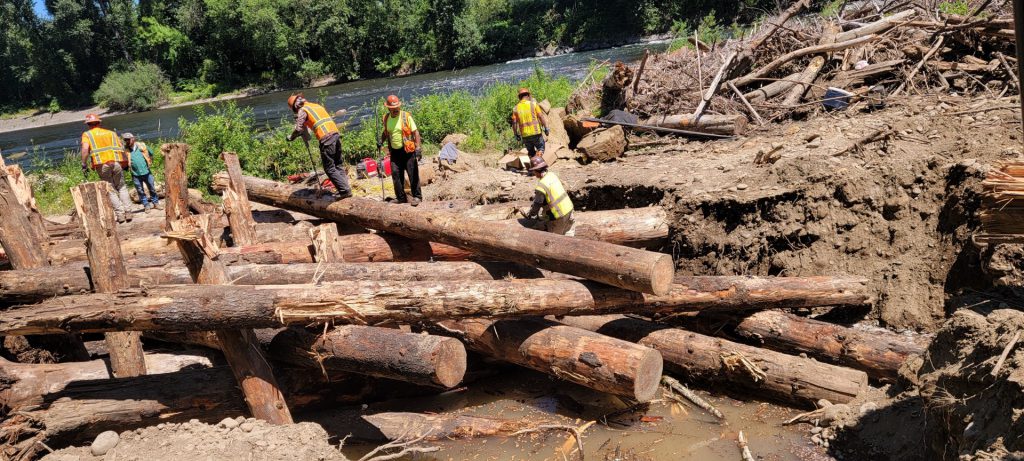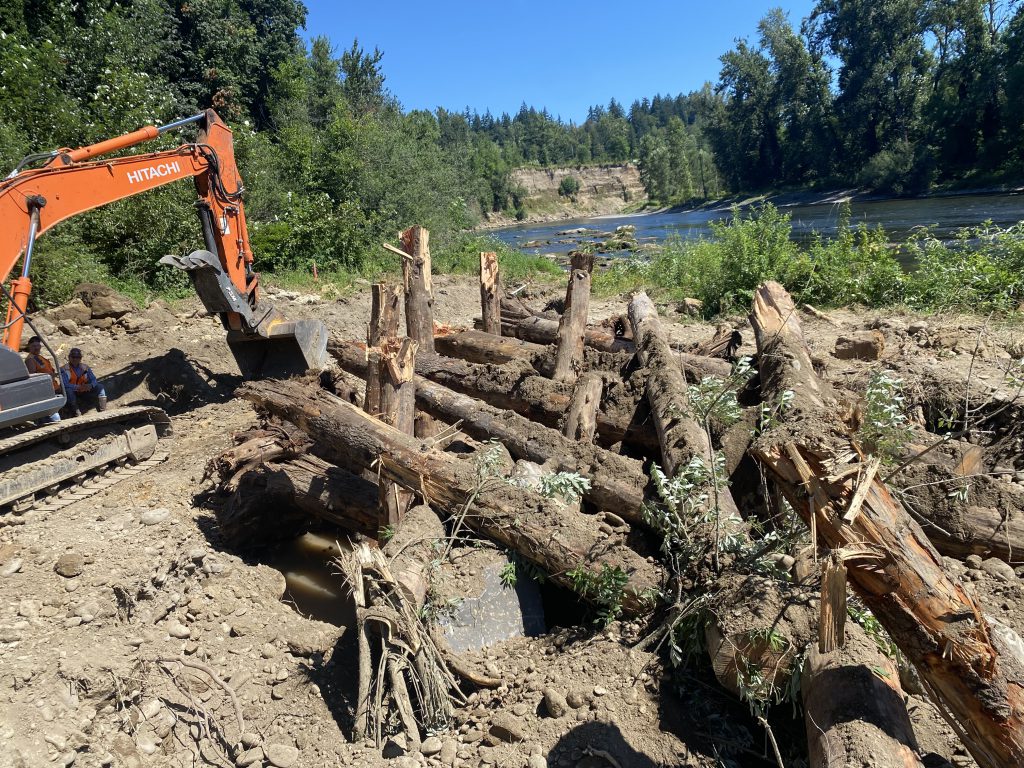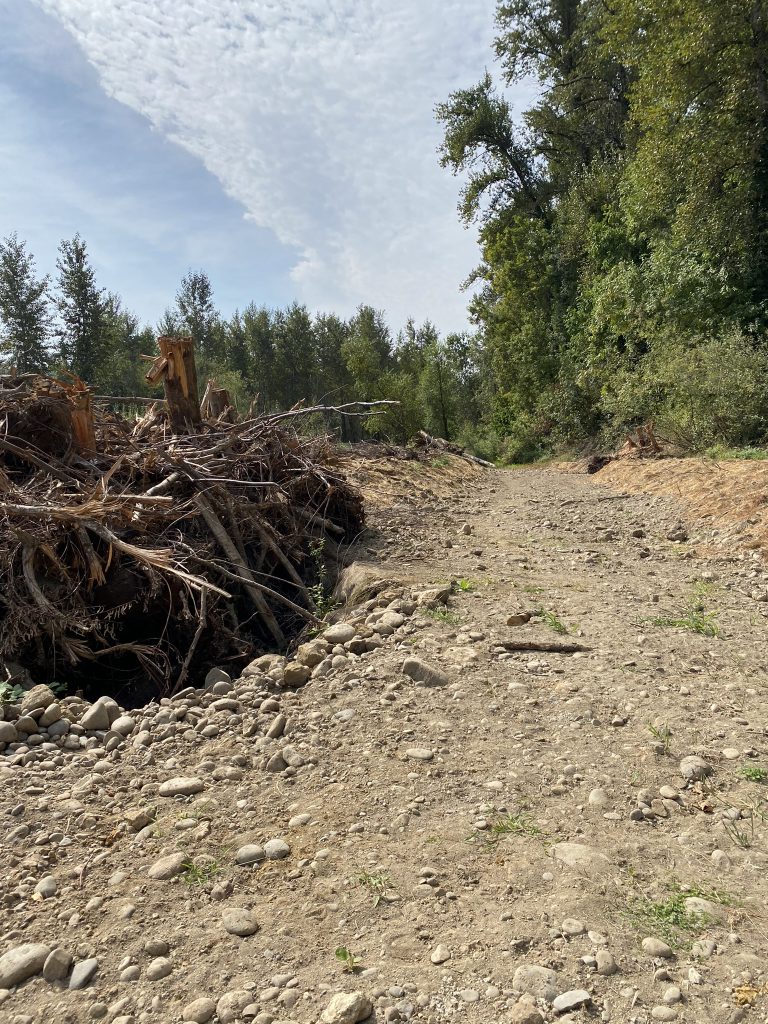Construction is complete!
Construction wrapped up in August on our Sieben-Riverbend Side Channel Enhancement Project. Now this newly connected side channel will increase and improve habitat for threatened and endangered native fish species. The project, which took place at the confluence of Sieben Creek and the Clackamas River, involved digging out an historic side channel off the Clackamas River, installing large wood, and restoring a degraded riparian area.
Lack of quality side channel habitat has been identified by the Clackamas Partnership as a primary limiting factor to salmon recovery and young fish need access to these off channel habitats. The Clackamas River Basin Council’s Restoration Program Manager Isaac Sanders puts it this way, “If you think of the Clackamas River like a freeway, these side channels are like rest areas where juveniles can eat, rest, and avoid predators. Fish species such as Chinook and Coho Salmon, steelhead and Pacific lamprey will benefit from these side channel rest areas and get stronger and more equipped to handle their road trip to the ocean.”
Outcomes of recent construction at the Sieben-Riverbend Side Channel Enhancement Project:
- Reconnection and enhancement of a 1,750’ side-channel.
- Increased fish access to riparian floodplain areas.
- Increased large wood habitat for fish and other wildlife.
- Removal of invasive weeds.
Next steps:
- Now that construction has wrapped up, CRBC will begin planting in the riparian area at the site with native trees, shrubs and grasses.
- We will maintain the site for five years and ensure weeds do not encroach and native plantings thrive.
What are side channels?
Side channels are complex habitat systems consisting of floodplains, ponds, and woody habitat that provide the necessary rearing environment for young fish as they migrate downstream. Today, few high quality side-channel habitats remain in the Clackamas River below River Mill Dam. Development, land management, power generation and other habitat altering activities change natural river systems and contribute to the loss of these side-channels.
While salmon and many other fish populations are declining to the point of being listed on the federal Endangered Species List (ESA), the Clackamas River and its tributaries support some of the healthiest fish populations in the region. Side channel enhancement projects such as this further our efforts to recover these populations.
This project will be further stewarded by nearby landowners who have been champions of this project since its inception. The Clackamas River Community Cooperative, a mobile home community just behind the project site, is eager to see the improvements to fish habitat in their backyards. “Our community is comprised of many different people but a common thread is the love of our green spaces,” says Maury, a CRCC resident. “ We are excited to further enhance our riparian area and create an environment for the fish and wildlife to flourish. What’s healthy for the fish and wildlife is ultimately healthy for us humans too. This river supplies over 300,000 of us with high quality drinking water. We are glad to partner with this project.”
The project is funded by the Oregon Water Enhancement Board through their Focused Investment Partnership (FIP) Implementation grant and other local, state and federal grants. Other grantors include Metro, who provided funding for this project through a Metro Nature in Neighborhoods grant.
The Clackamas River Basin Council is a 501(c)(3) nonprofit with the mission of fostering partnerships for clean water and to improve fish and wildlife habitat and the quality of life for those who live, work and recreate in the watershed.
You can read more about this project on the Clackamas Partnership’s website:
Photos During Construction









Photos After Construction







